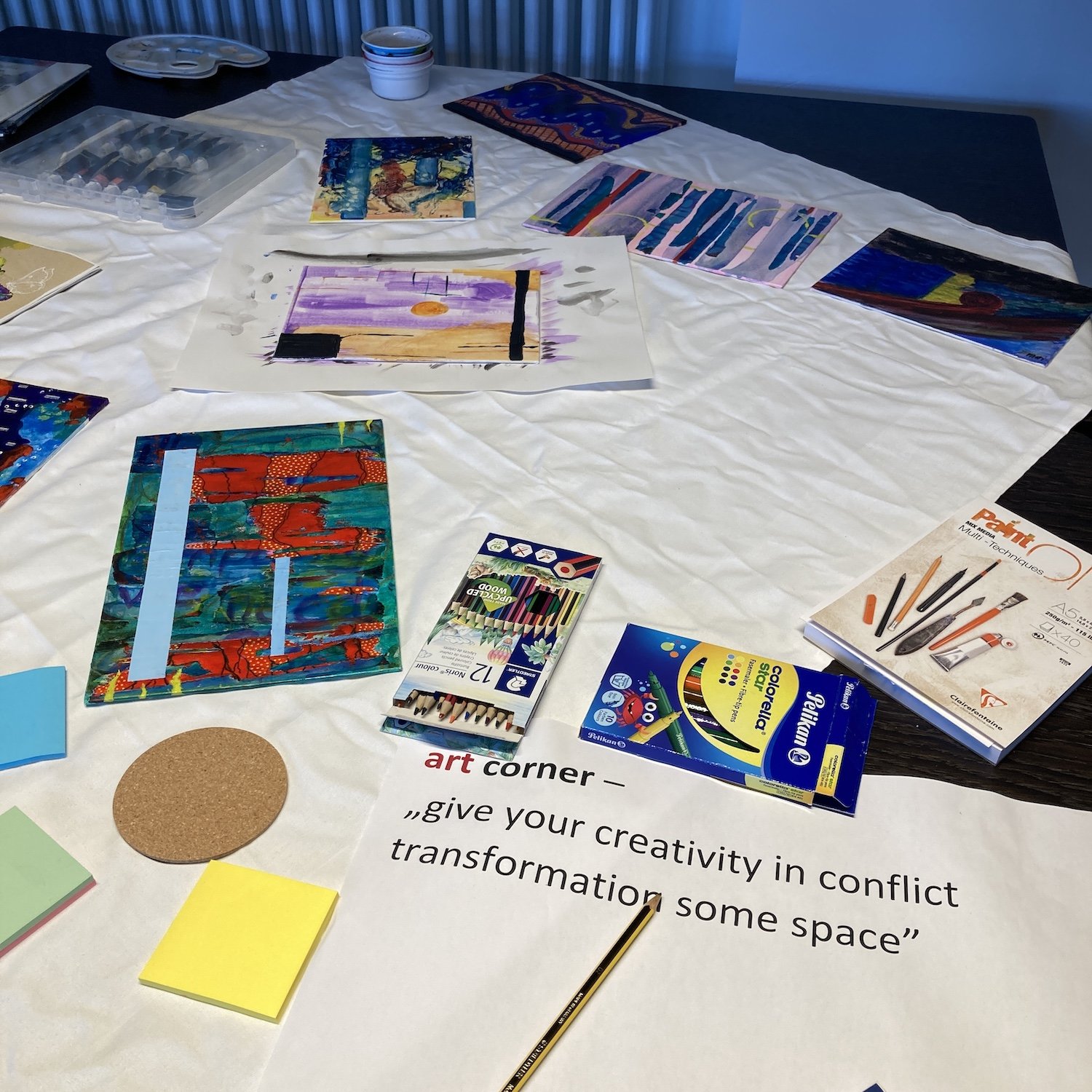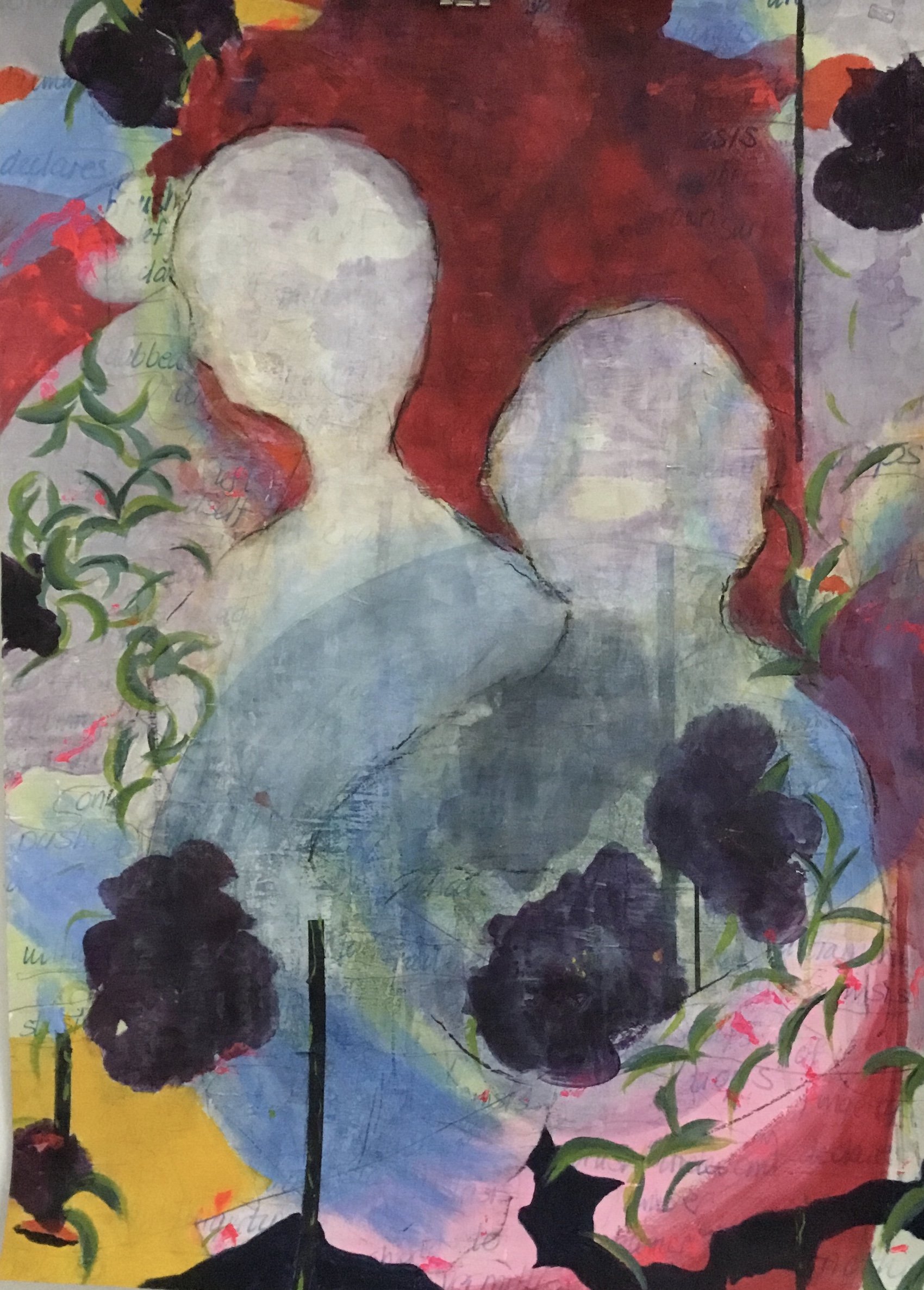An Experimental Poetry course that I'm taking online with The Poetry School has opened up an exciting new way of combining words with paint, and I thought I would share some of the work that’s ongoing.
I came to art from a career in applied linguistics (roughly, the study of how people use language). When I shifted to painting, I left that behind in favour of colour and the excitement of making images with paint. Creating something new rather than analysing what had already been said. I put words aside. But they refused to leave. And in the latest work they also insist on being more than just ‘visual objects’, refusing to be separated from their latent meanings.
Below you can see some of the layers. It began with automatic writing using the stubby, water-soluble crayons I take travelling: blue-green-yellow-and turned sideways for red. After washing and smudging the writing, long shapes were made by drawing lines that connect letters down from top to bottom of the paper, and the shapes filled with colours. Through these layers, some of the original words stayed visible and became a kind of poem - I increased their visibility with an acrylic marker pen. Finally, indigo curves printed with wet string, white drips and splashes, and magenta arcs to connect words and balance the whole.
The end result is both painting and poem. In each of my various career strands, I have wanted to bring together what is kept separate by convention or history: academic disciplines, creative practices, modes of meaning, words and paint.
The connecting project continues ...
What is there? poem~painting, Lynne Cameron































































